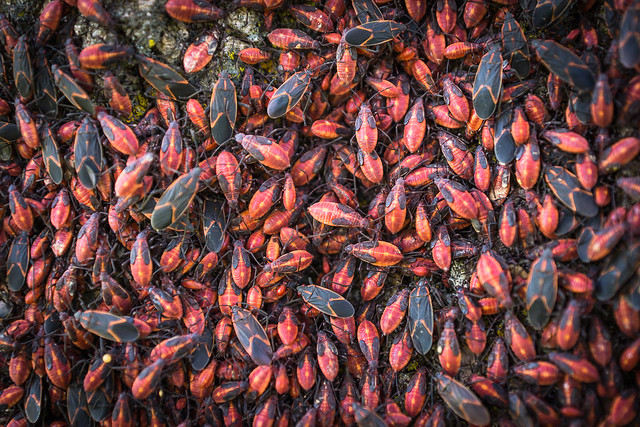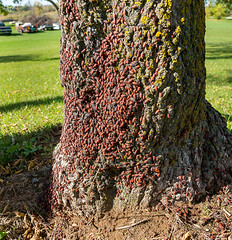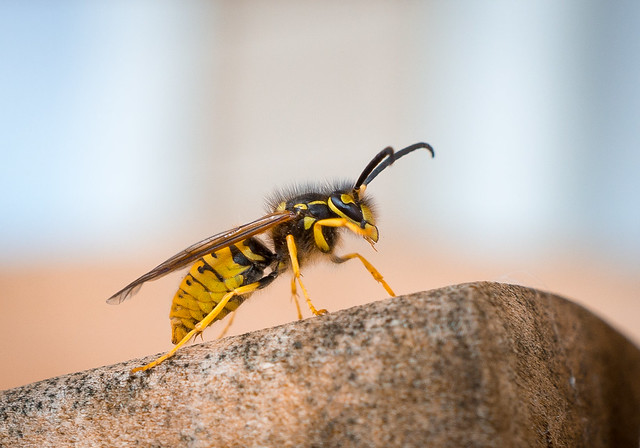Insect
Green-banded Swallowtail

This is the Green-banded Swallowtail butterfly. Some might also refer to this butterfly as a Green Banded Peacock or Emerald Swallowtail. It is common to South Asia, including India and Sri Lanka.
In this image, the bands on the wings seem to be more of a blue color. Apparently the color can vary slightly, depending on the angle of view. From the back, it can seem more blue – from the front it appears more green. As you can see, this butterfly is peppered with green scales either side of the main bands. The coloration is a structural color not a pigmented color. The structure of the scales on this butterfly give it the iridescent green color.
Their main diet is provided by plants in the citrus family. On a sad note, they have a short lifespan. The adult Green-banded Swallowtail butterflies rarely last longer than a week.
I photographed this creature on a recent visit to The Butterfly Palace and Rainforest Adventure in Branson, Missouri.
To view some of the details in this macro photo, click on the image and a larger version will open in a new browser tab.
All of the photos I post are available for purchase. If you’d like to buy one, click on the blue “Buy this Online” bar below for a variety of print and frame options or contact me for digital purchase and licensing options.
Look of Defiance
Thick as Thieves

 This seems to be an early autumn convention of Boxelder bugs. They’ve congregated at the bottom of a tree.
This seems to be an early autumn convention of Boxelder bugs. They’ve congregated at the bottom of a tree.
When it begins to cool down in Wisconsin, these bugs may form large aggregations while sunning themselves in areas near their host plant – usually maple or ash trees. I’ve also seen them gather in other odd places…the corner of a building, around a door way, etc.
They are harmless to humans but considered nuisance pests. When the temperatures begin to cool in the fall, they sometimes invade houses and other man-made structures seeking warmth or a place to overwinter.
People often mistaken them with insects known as Stink Bugs – a different species. However, boxelder bugs will release a pungent and bad-tasting compound upon being disturbed to discourage predation; this allows them to form conspicuous gatherings without being preyed on.
To get a better view, click on the top photo and a larger image will open in a new browser tab.
Keen Green

When asked what category of photography I prefer (such as landscapes, nature, portrait, etc.), I often say, “I just shoot whatever catches my eye.” This is a prime example.
I was climbing up and down a ladder, taking storm windows off my house, when something caught my eye. It was a little flash of green. I paused my work to get a better look.
There is a propane tank next to my house that rests on cement blocks. On the corner of one of those blocks was this little green bug – no longer than the width of your thumbnail. It was frantically skittering over the concrete, but staying in one general area. It was such a beautiful, iridescent, green – made even more spectacular by it’s dance in the bright sunlight. I couldn’t just ignore it. I went to get my camera. (Contrary to what some might think, I don’t have my camera hanging around my neck every moment of the day.)
I didn’t have time to fool around. The way the bug was moving, I was concerned he’d slip off into the grass and never be seen again. My camera had a long, 300 mm lens on it – the kind I use to get close-ups of distant objects like a lighthouse or the moon. (With that lens, I think I can see Alaska from my house.) No time to change to a shorter lens, so I grabbed it and dashed back out.
The bug was still there, but still erratic. I tried getting a ground-level shot, but it’s movements made focusing impossible. I decided to shoot it from above, where it’s side to side movements wouldn’t change the distance to my lens so much. The problem was, I couldn’t hold the camera high enough to get within the focal range of the long lens. I ended up climbing a couple of rungs up the ladder to get my shot in focus. I took several shots. This is the one that was most in focus. Not bad, considering I was probably 7 feet off the ground.
I didn’t notice the white dots when just looking at it. I guess the dazzling green distracted me.
A friend helped me identify this as a six-spotted tiger beetle. You can read more about them here: http://www.fcps.edu/islandcreekes/ecology/six-spotted_tiger_beetle.htm
(Click the photo to see a larger version.)



















































